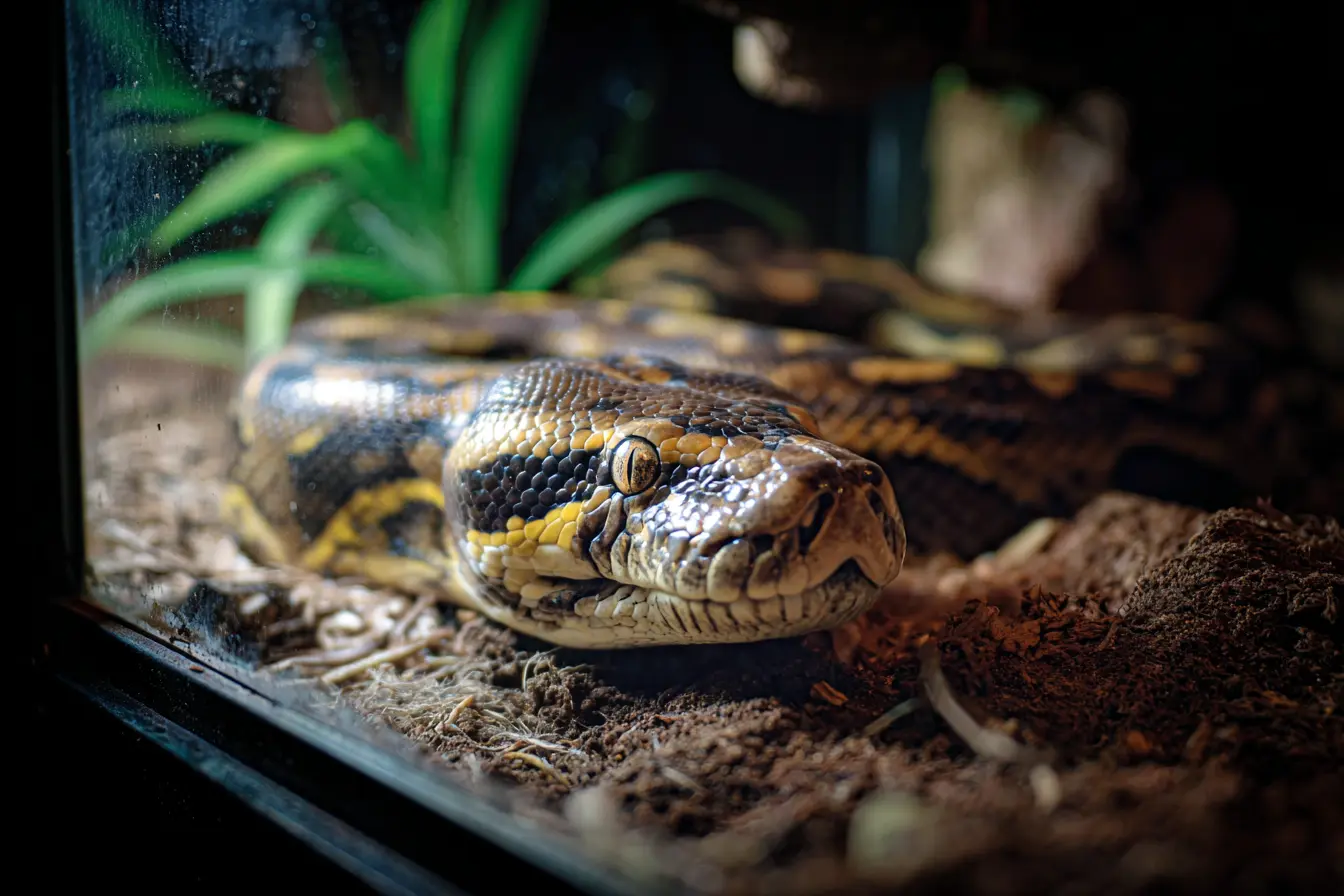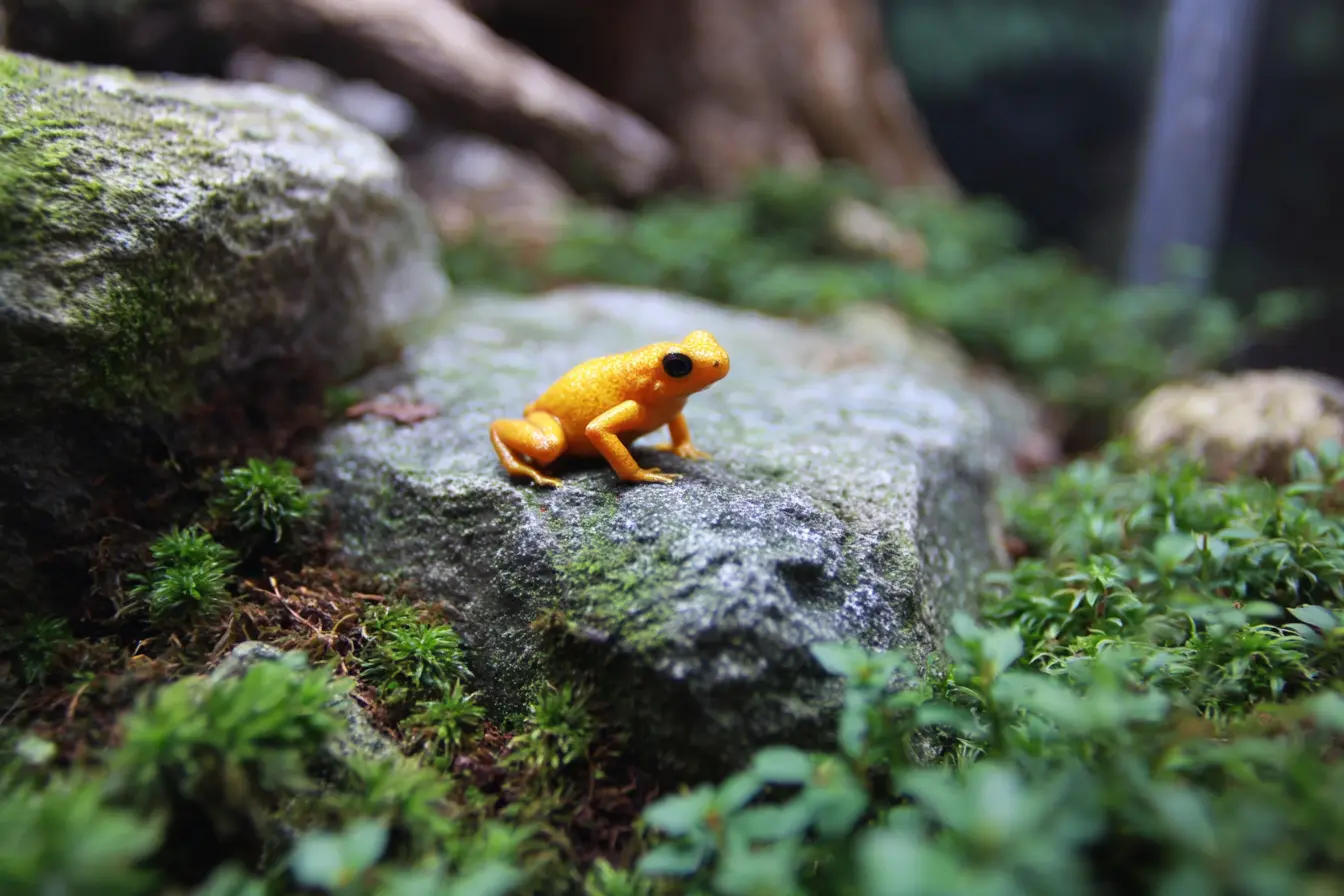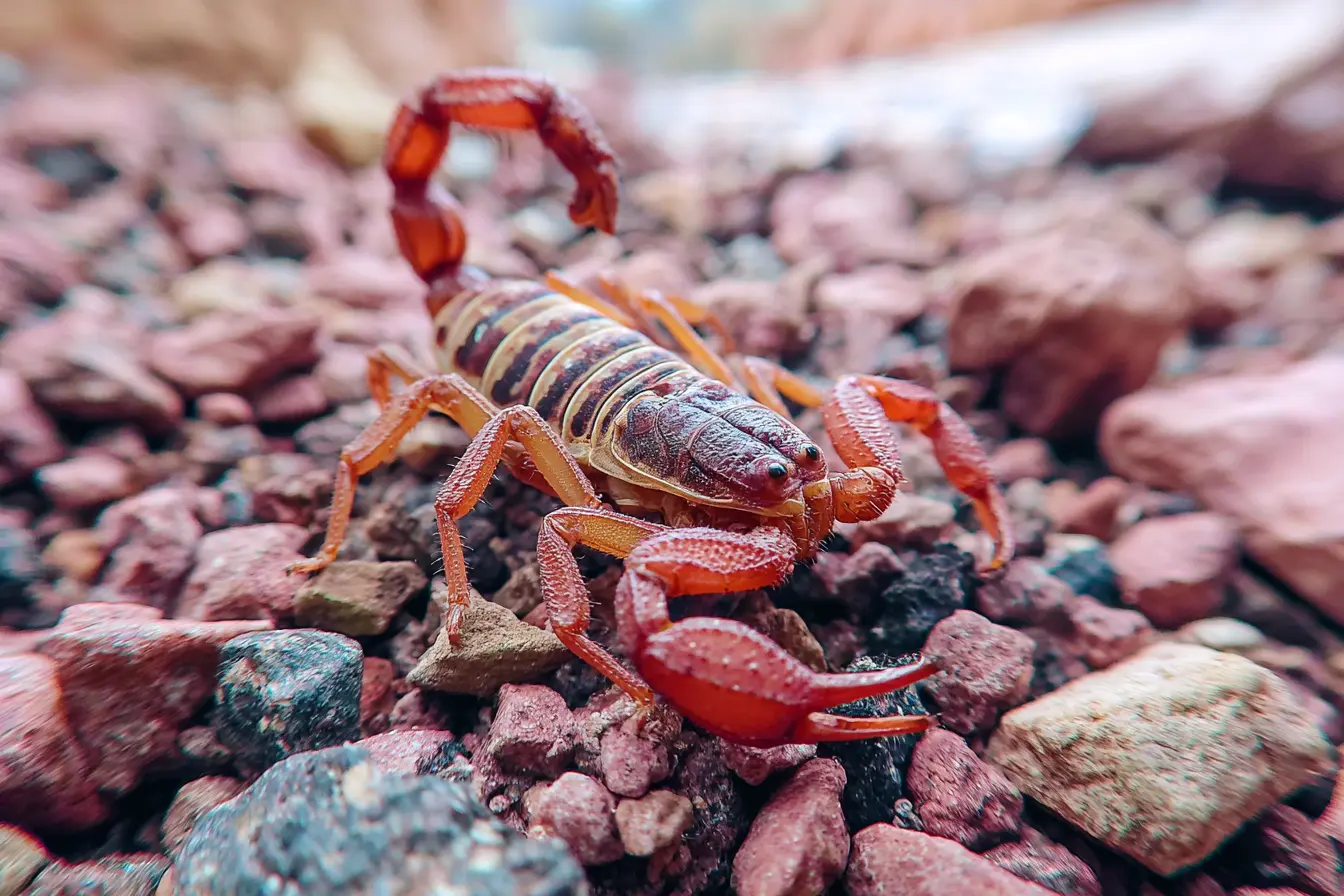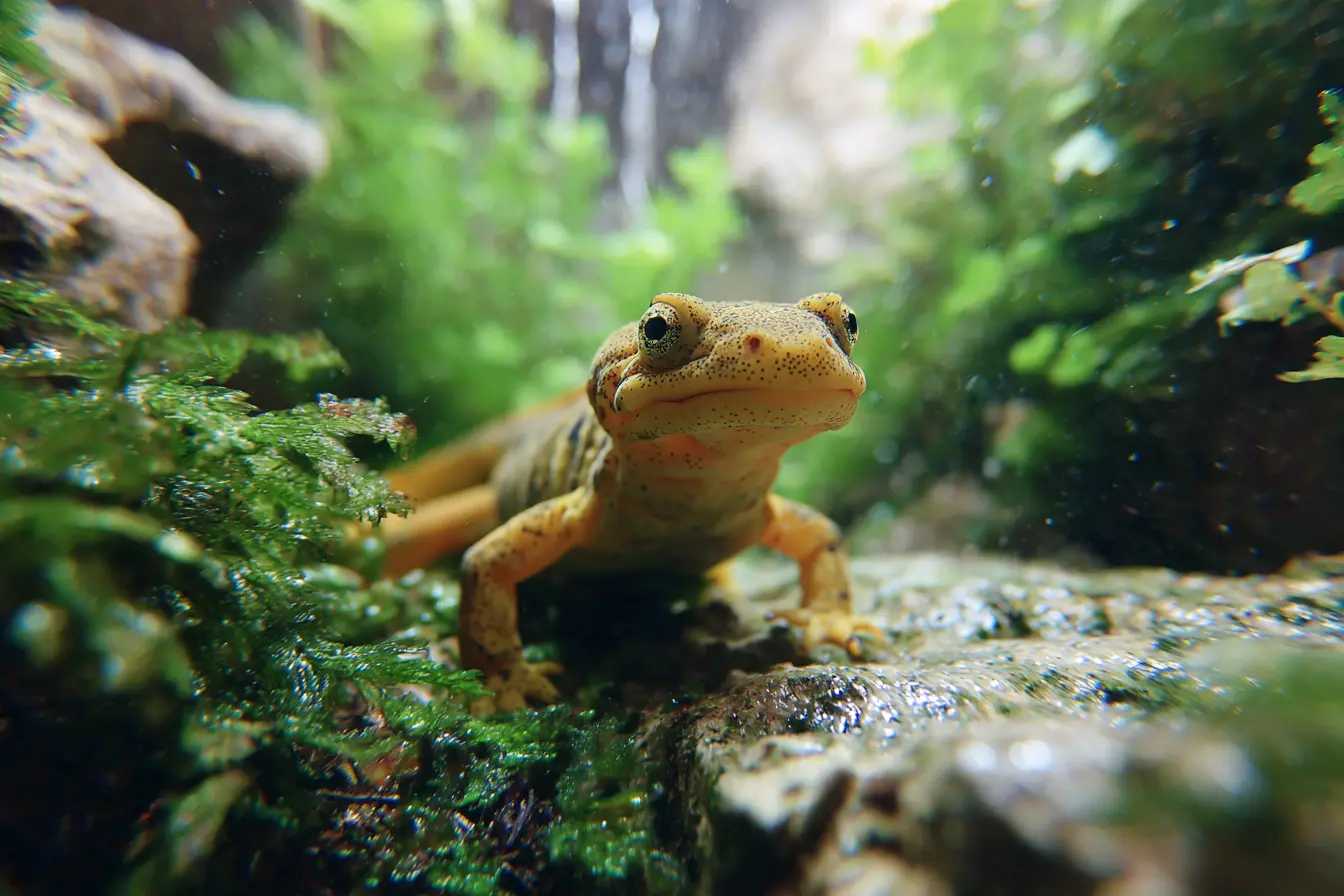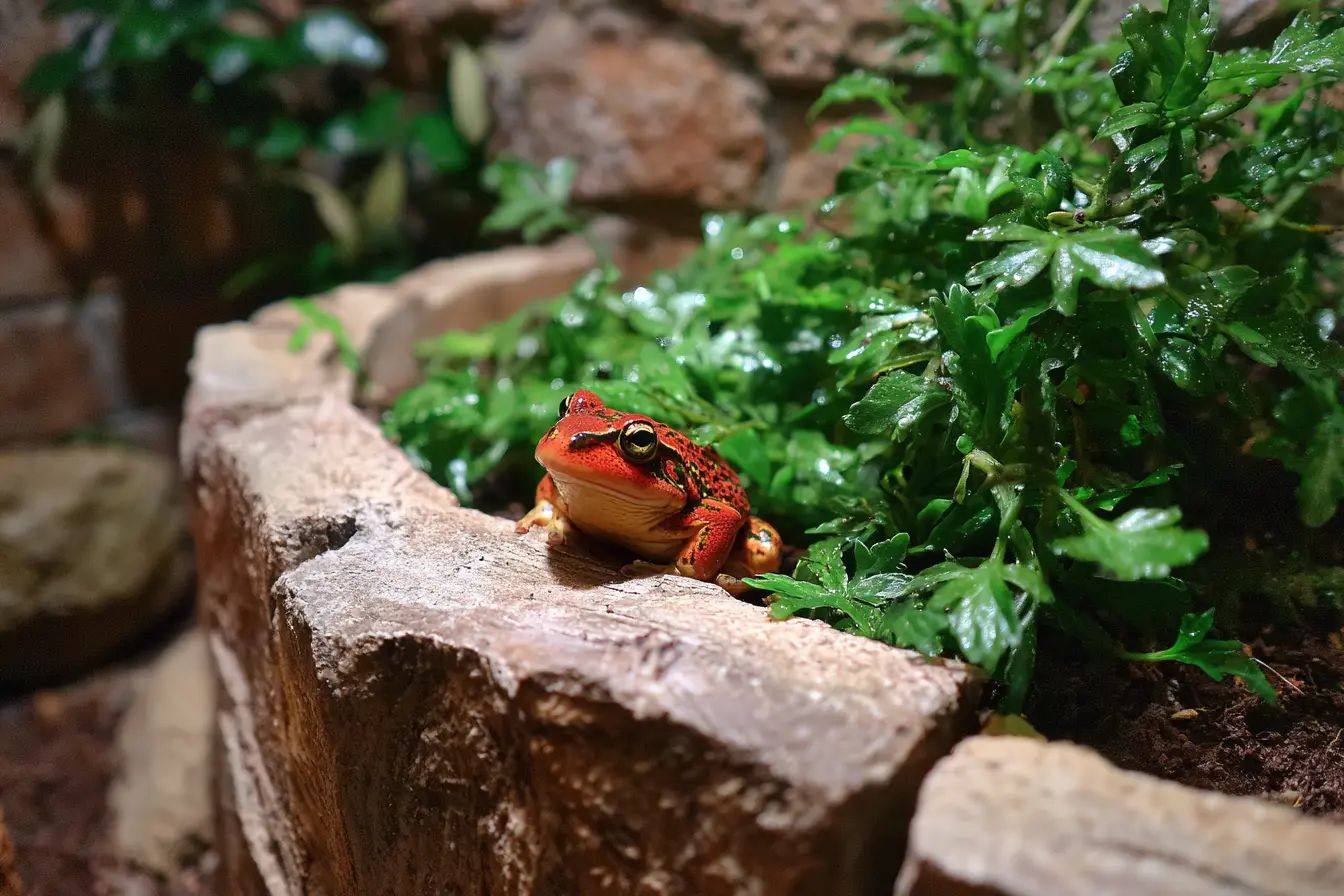
Keeping the Tomato Frog
The tomato frog (Dyscophus spp.), native to Madagascar, is a striking amphibian known for its vibrant red-orange coloration and rounded body. Its name comes from its tomato-like appearance, which is not just for show—this coloration serves as a warning to predators that the frog can secrete a sticky, irritating toxin when threatened.
Tomato frogs are generally hardy and make excellent display pets for beginner to intermediate amphibian keepers. This guide outlines all the essentials for successfully caring for tomato frogs in captivity.
Physical Characteristics
Species and Size
There are three species in the genus Dyscophus, but Dyscophus antongilii and Dyscophus guineti are the most commonly kept:
- D. antongilii (true tomato frog): Females can reach 10 cm (4 inches), while males stay smaller, around 6–7 cm (2.5–3 inches).
- D. guineti: Slightly smaller and less vibrantly colored but cared for in the same way.
Lifespan
- With proper care, tomato frogs can live 6 to 10 years in captivity.
Colouration and Skin Texture
- Females are typically bright red to orange with some darker markings.
- Males are more muted, with yellower or brownish-orange tones.
- The skin is smooth and rubbery, and some individuals may have slightly granular skin texture.
- They can puff up their bodies when threatened, making themselves appear larger.
Sexual Dimorphism
- Females: Larger and more brightly colored.
- Males: Smaller, often with a rougher croaking call during the breeding season.
Legal Considerations and Ethics
Always ensure your tomato frog is captive-bred. Wild populations are under pressure due to habitat destruction, so supporting responsible breeders helps protect the species. Check local exotic pet regulations before purchase.
Housing and Enclosure Setup
Tomato frogs are terrestrial and require a humid environment with plenty of ground space and hiding areas.
Tank Size
- A single adult can be comfortably housed in a 40-litre (10-gallon) tank.
- A 75-litre (20-gallon) tank or larger is recommended for pairs or more naturalistic setups.
Substrate
- Use a moisture-retaining substrate such as:
- Coconut fiber (coir)
- Organic topsoil (without fertilizers)
- A mix of soil and sphagnum moss
- The substrate should be 5–10 cm (2–4 inches) deep to allow for burrowing.
Enclosure Furnishings
- Provide multiple hides using cork bark, half-logs, or coconut huts.
- Leaf litter, plants (live or fake), and moss can create a more naturalistic environment.
- A shallow water dish large enough for soaking is essential but should not be too deep.
- Ensure all décor is stable and cannot collapse on the frog.
Temperature and Humidity
- Temperature: 22–27°C (72–80°F) during the day, with a slight drop at night.
- Humidity: 60–80%. Mist daily or as needed to maintain humidity.
- A low-wattage heat mat or overhead ceramic heater can be used if room temperature is too low.
- Avoid direct high heat or intense lights.
Lighting
- Tomato frogs are nocturnal and do not require UVB, but low-level lighting can help establish a natural day-night cycle.
- Full-spectrum lighting is beneficial for plant growth in bioactive enclosures.
Diet and Feeding
Tomato frogs are ambush predators and enjoy a varied diet of live insects.
Suitable Food Items
- Crickets
- Dubia roaches
- Earthworms (excellent staple)
- Black soldier fly larvae
- Waxworms (as occasional treat)
- Small hornworms or silkworms
Feeding Schedule
- Juveniles: Feed daily with appropriately sized insects.
- Adults: Feed every 2–3 days.
Feeding Tips
- Dust insects with a calcium supplement 2–3 times per week.
- Offer a multivitamin supplement once every 1–2 weeks.
- Use feeding tongs or place prey near the frog to encourage hunting.
Behaviour and Temperament
Tomato frogs are shy and secretive, spending much of their time burrowed or hidden. They may venture out at night to feed.
Key Behaviours
- Inflate their bodies when threatened.
- Secrete a sticky toxin from their skin if stressed or handled excessively.
- Generally peaceful and can be housed singly or in same-sized pairs with caution.
Handling
- Avoid handling unless absolutely necessary.
- Their skin secretes mild toxins that may irritate human skin and eyes.
- Always wash hands thoroughly after contact.
Health and Common Issues
Tomato frogs are robust if kept in a clean, well-maintained environment.
Common Problems
- Dehydration: Results from low humidity or lack of water.
- Impaction: Can occur if frogs ingest substrate. Use larger, digestible prey and avoid loose gravel.
- Obesity: Caused by overfeeding or too many fatty foods like waxworms.
- Skin infections: Often fungal or bacterial, stemming from poor hygiene or stagnant conditions.
Preventative Care
- Maintain clean substrate and fresh water.
- Quarantine new animals before introducing them to a shared enclosure.
- Feed a balanced diet and avoid overfeeding.
Breeding Tomato Frogs
Breeding in captivity is possible but requires specific environmental changes to mimic seasonal rains.
Breeding Triggers
- Simulate a dry season by reducing misting and slightly lowering temperature for a few weeks.
- Reintroduce moisture through heavy misting and rainfall simulation (drip systems or misting systems).
- Raise temperatures slightly to initiate spawning behavior.
Reproduction and Development
- Females lay hundreds of eggs in shallow water.
- Eggs hatch in 1–2 days.
- Tadpoles should be transferred to a rearing tank with clean, warm water.
- Feed tadpoles algae wafers, powdered spirulina, or finely crushed fish food.
- Metamorphosis takes 45–60 days.
Conclusion
Tomato frogs are beautiful, low-maintenance amphibians ideal for those seeking a vibrant and relatively easy pet. While not interactive, their bold colours, burrowing habits, and interesting defensive mechanisms make them great for observation.
With the right setup, diet, and environmental care, a tomato frog can live a long, healthy life as a centerpiece in a naturalistic terrarium. A rewarding species for anyone who enjoys amphibians and is willing to meet their modest needs.
Vets near you
Speciality vets
- Aquatics vet specialists
- Birds vet specialists
- Camelids vet specialists
- Cats vet specialists
- Cattle vet specialists
- Deer vet specialists
- Dogs vet specialists
- Equines vet specialists
- Exotic vet specialists
- Goats vet specialists
- Pigs vet specialists
- Poultry vet specialists
- Sheep vet specialists
- Small Mammals vet specialists
- Wild vet specialists
